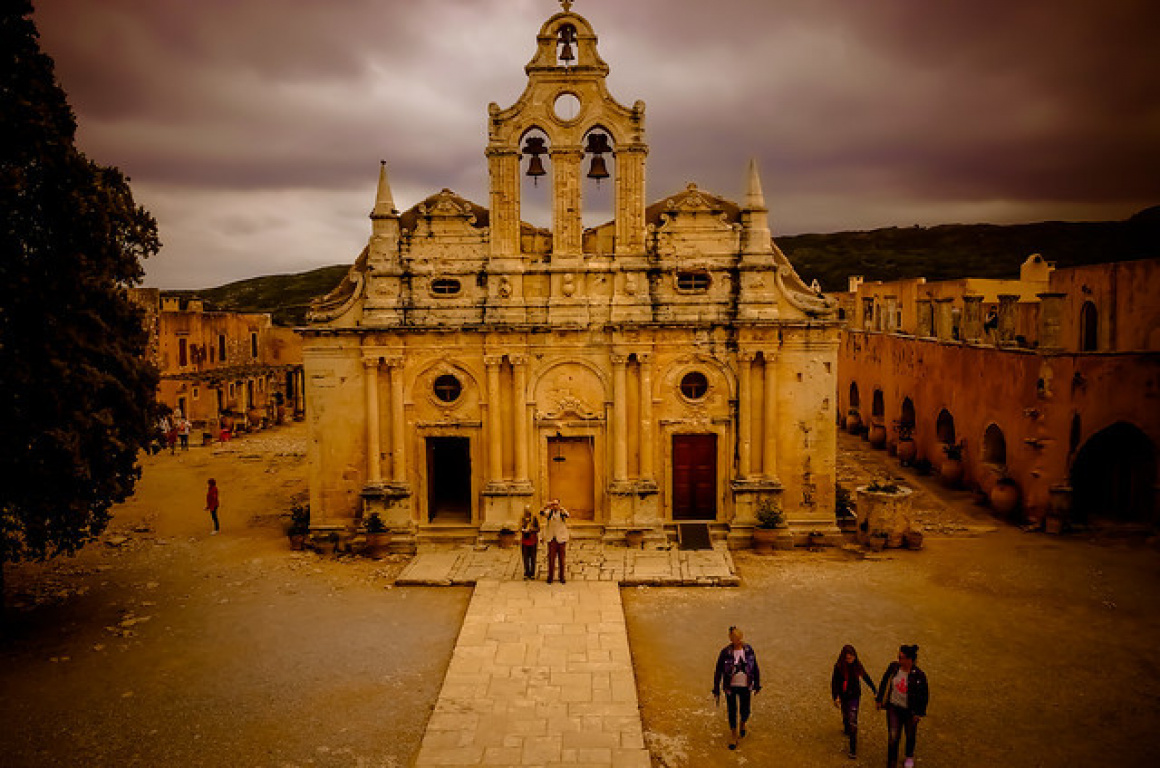Introduction
Tucked in the hills of Rethymno, surrounded by vineyards and olive groves, lies the Arkadi Monastery – a place of serene beauty and profound sacrifice. As you approach, the monastery's stone walls and ornate Venetian-era church façade come into view, glowing honey-gold in late afternoon sun. It's hard to imagine that this tranquil complex, with its bougainvillea-lined courtyard and distant sheep bells clanging, was the site of one of Crete's most dramatic historical events. Yet, stepping through Arkadi's heavy wooden gates, you enter sacred ground that symbolizes Cretan freedom and resilience. The blend of tranquility and heroism here creates an atmosphere both somber and uplifting, making Arkadi a must-visit for travelers seeking deeper cultural insight. For more ideas on what to see and do during your trip, consider exploring Things to Do, See, and Where to Go once you've discovered Arkadi's moving story.
A Sacred Refuge with a Heroic Past
Arkadi Monastery dates back at least to the 16th century (some say earlier), flourishing during the Venetian rule of Crete. The monastery's centerpiece is a stunning two-aisled church (catholicon) built in the 1580s, featuring an ornate baroque façade that wouldn’t look out of place in Venice. At its peak, Arkadi was a center of learning – it housed a school and scriptorium – and the complex was fortified with thick Arkadian stone walls, essentially functioning as a self-sufficient citadel. Indeed, Arkadi was built as a refuge, which would prove fateful during Crete's uprisings.
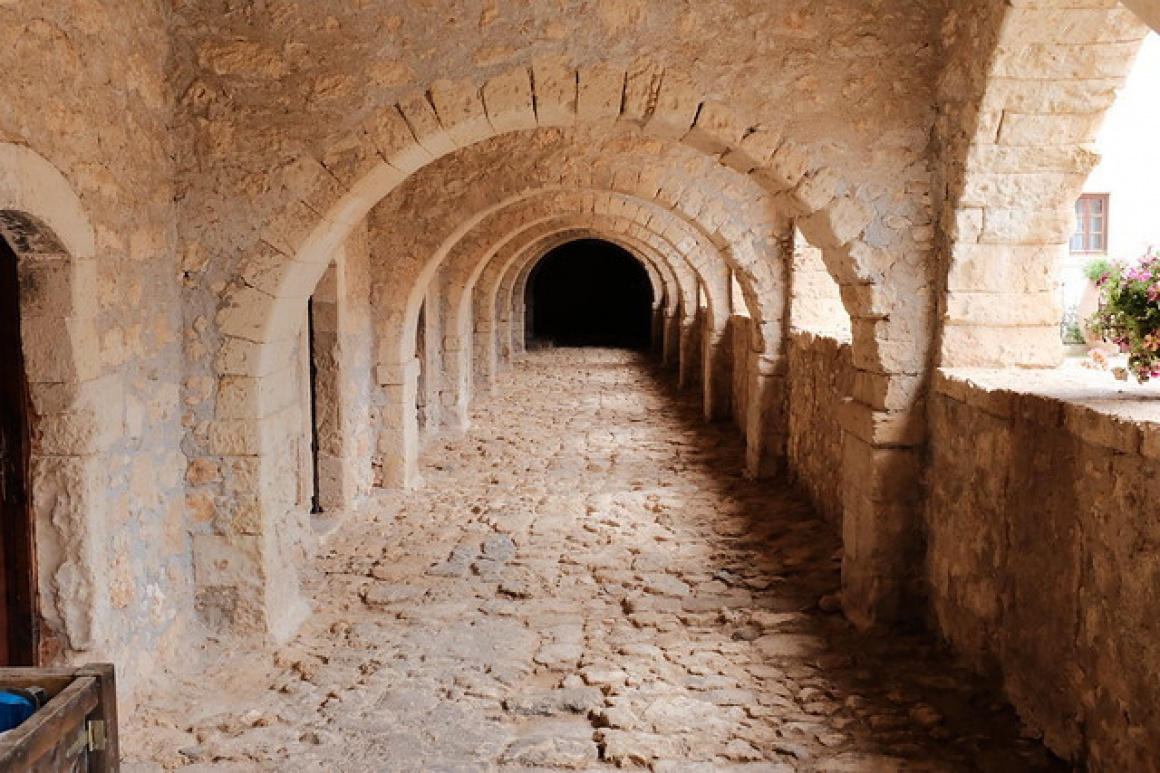
 'Arkadi Monastery' - Attribution: Safa Hovinen
'Arkadi Monastery' - Attribution: Safa HovinenThe monastery is most famous for its role in the Cretan revolt of 1866 against Ottoman rule. In November of that year, hundreds of locals – 943 people, mostly women and children – sought refuge behind Arkadi's sturdy walls, fleeing Ottoman forces. The monks and villagers, vastly outnumbered and besieged for three days, made a dramatic choice: they refused to surrender. As the Ottomans breached the gates, Abbot Gabriel together with the defenders ignited the gunpowder stores. The resulting explosion killed hundreds of Cretans and Turks alike, turning Arkadi into a blazing pyre. This act of self-sacrifice was devastating, but it struck a chord around the world. News of the “Holocaust of Arkadi” spread, rallying international sympathy for the Cretan struggle. Although the rebellion did not immediately succeed, Arkadi became a powerful symbol of resistance. In the aftermath, the monastery was declared a national sanctuary in honor of the Cretan fight for freedom. To this day, November 8 is remembered with somber ceremonies at Arkadi and in Rethymno, commemorating the heroic sacrifice.
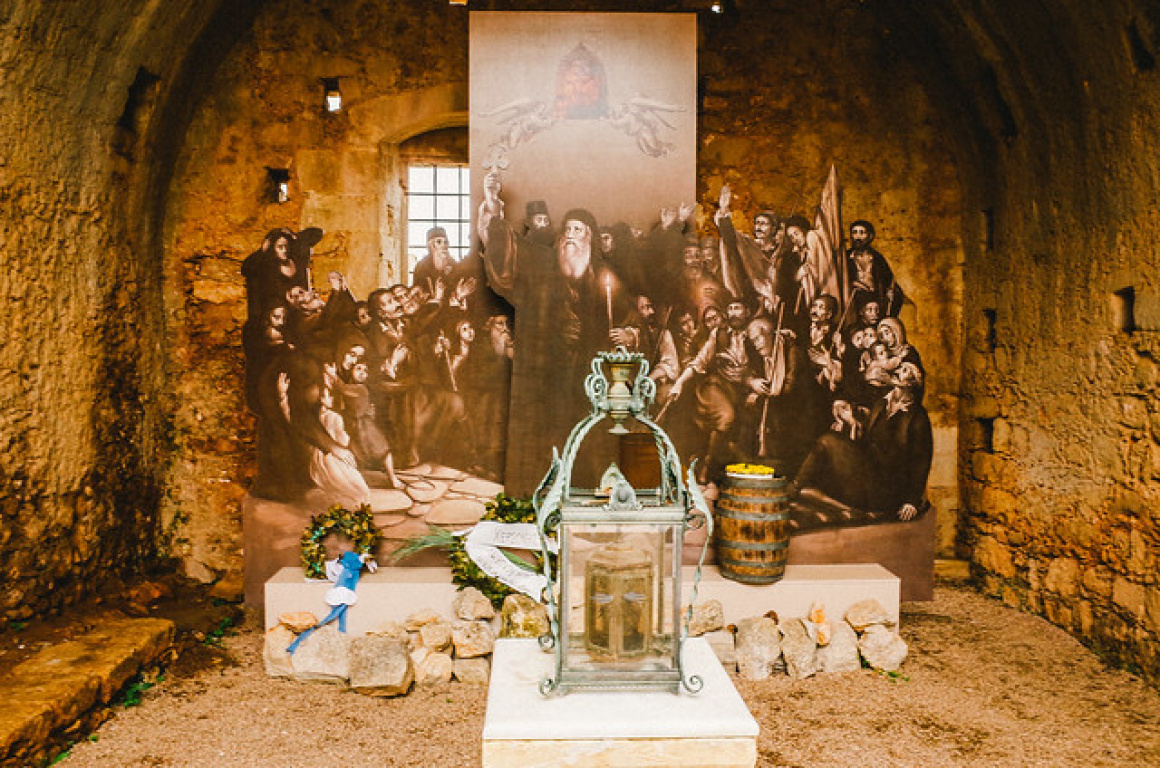
 'Greece, Crete, Arkadi Monastery' - Attribution: Epsilon68 - Street and Travel Photography
'Greece, Crete, Arkadi Monastery' - Attribution: Epsilon68 - Street and Travel PhotographyExploring the Monastery Grounds
Walking into Arkadi's courtyard, you'll first notice the beautiful catholicon (church). Its facade features twin bell towers and ornate stone carvings – a mix of Renaissance and baroque elements that reflect Venetian influence. Despite damage over the centuries, the church has been lovingly restored. Step inside to see its wooden iconostasis and flickering beeswax candles. The smell of incense often hangs in the air, and you might hear the soft chanting of a priest or the rustle of a black-robed Orthodox monk passing by.
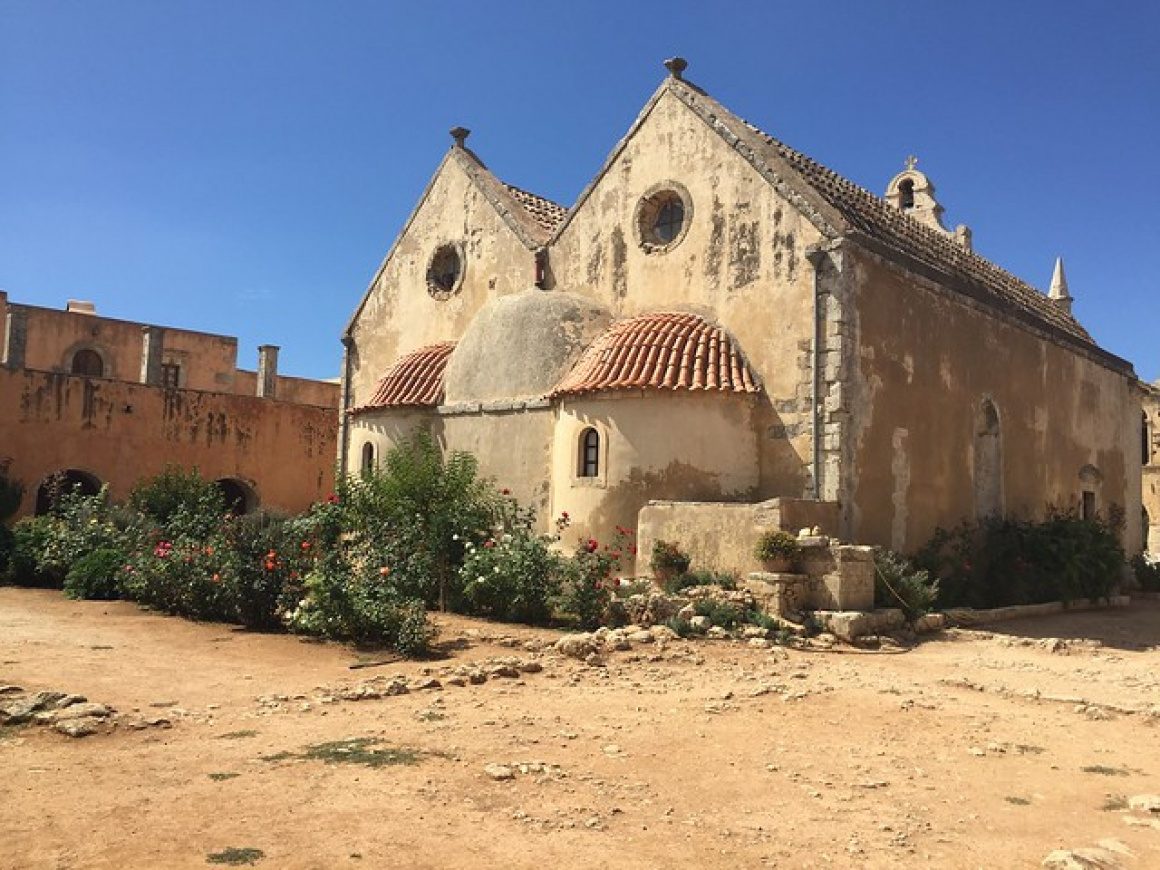
 'Arkadi Monastery' - Attribution: Tjeerd
'Arkadi Monastery' - Attribution: TjeerdBehind the church, the cloisters and monks' cells form a broad rectangle. The atmosphere is peaceful – doves cooing under the eaves, flowering plants bursting from clay pots along the walkways. This tranquility belies the evidence of battle that eagle-eyed visitors can spot. Look closely at some of the walls and window frames: you can still see bullet holes and pockmarks from 1866, tangible scars of the siege. One interior room, a former storage cellar, is pointed out as the gunpowder magazine that was ignited. A blackened hole in the wall reportedly marks the spot of the blast. It's a chilling feeling to stand there and imagine the flash of light and thunderous explosion that once tore through this quiet haven.
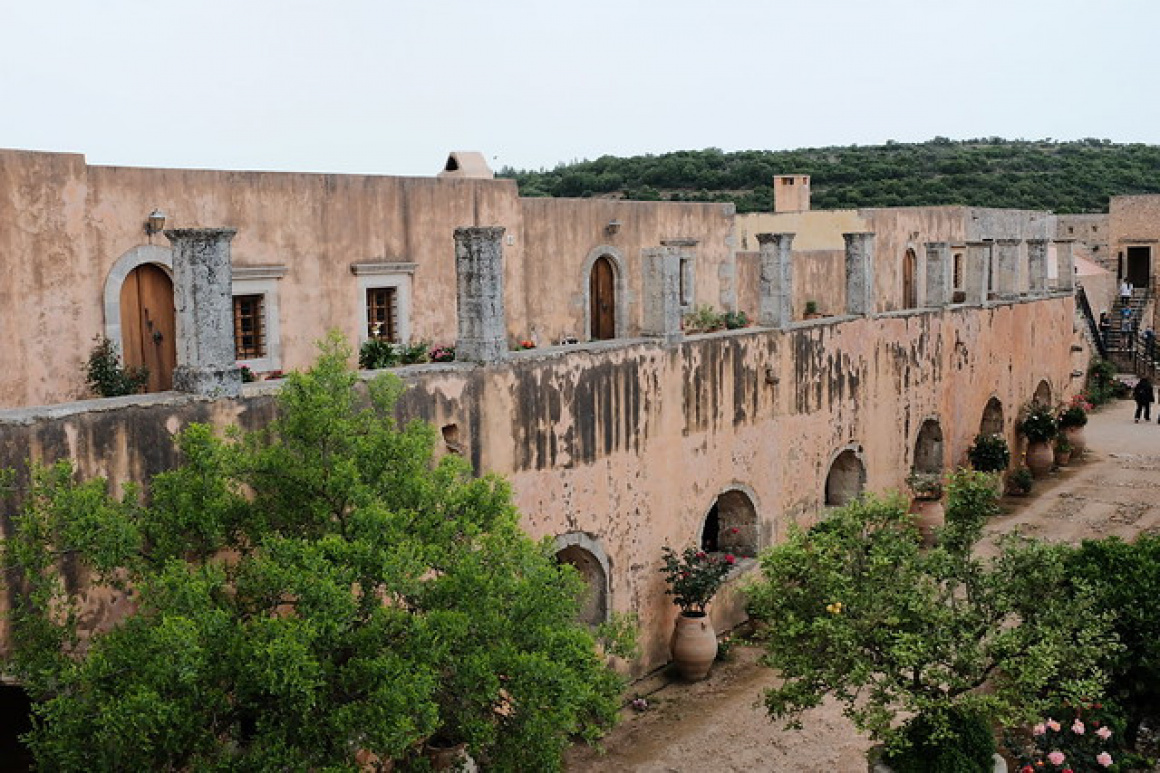
 'Arkadi Monastery' - Attribution: Safa Hovinen
'Arkadi Monastery' - Attribution: Safa HovinenExiting the courtyard on the west side, you'll come to a small museum. Here, Arkadi's historical artifacts are on display: centuries-old manuscripts saved from the fire, priests' vestments, and a legendary banner believed to have been held by the rebels. Particularly moving are the relics related to the siege – fragments of weapons, and the bullet-riddled monk's habit of Abbot Gabriel. These items underscore the human story of the place.
About 100 meters outside the monastery's main gate, a footpath leads to the Ossuary. Housed in a former windmill building, this memorial contains the skulls and bones of many who perished in 1866. Through glass panels, you can see the shelves of skulls – many visibly cracked or pierced by bullets. It's a grim but profound sight, a reminder of the cost of freedom. Above the door, an inscription reads: “Nothing is more noble or glorious than dying for one's country.” Standing there, gazing at the mortal remains of Arkadi's martyrs, one cannot help but feel a surge of respect and sorrow.
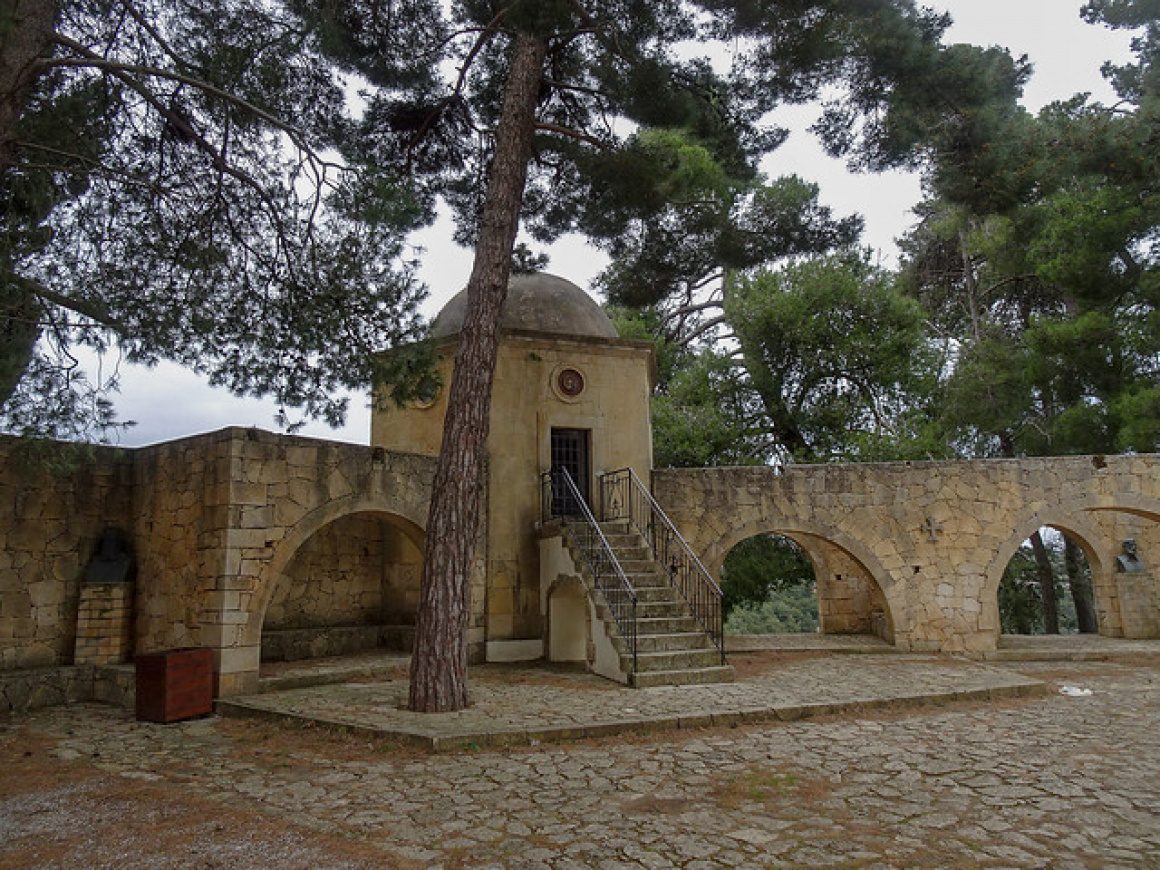
 'Ossuary' - Attribution: mikecogh
'Ossuary' - Attribution: mikecoghDespite its tragic history, Arkadi is very much alive. Monks still reside here, keeping the faith. You might spot them tending the gardens or pouring oil into the chapel lamps. There's even a resident peacock or two strutting about, adding a splash of color to the earthy tones of stone. If you visit in spring, the courtyard is perfumed with blooming jasmine and the surrounding hills are green and dotted with wildflowers. It's a scene of rebirth and hope, fitting for a place that literally rose from ashes.
Practical Information for Visitors
Location: Arkadi Monastery sits in the Rethymno region, about 23 km southeast of Rethymno town. The drive from Rethymno takes around 30–40 minutes, winding through scenic countryside and traditional villages. The last stretch is an uphill road through a plateau of grain fields and vineyards, with adequate signage pointing to “Moni Arkadiou.” There is a free parking lot near the entrance.

 'Road Back to the Coast' - Attribution: mikecogh
'Road Back to the Coast' - Attribution: mikecoghHours & Admission: The monastery is open to visitors daily. In summer, opening hours are roughly 09:00–19:00, and in the off-season it may close around 16:00. The entrance fee is around €3–€4, a small contribution that helps maintain the site. Remember this is an active monastery and a national monument – treat it with respect. Photography is allowed in the outdoor areas and museum, but refrain from flash inside the chapel, and absolutely no drones or disruptive equipment.
Dress Code: As with most Greek monasteries, modest attire is required. Shoulders and knees should be covered for both men and women. If you arrive in shorts or tank-tops, don't worry – at the entrance they usually have wrap skirts and shawls you can borrow to cover up. The monks appreciate this gesture of respect in what they consider a holy place.
When to Visit: Try visiting in the morning or late afternoon. Midday can be quite hot on the exposed plateau, and you'll have a quieter experience outside of peak tour bus hours (which tend to arrive late morning). Early in the day, you might catch the monks' morning chants drifting from the chapel. Late afternoon light is gorgeous on the stone walls and the surrounding landscape, ideal for photography. If you're lucky to be here in early November, you may witness the annual commemoration ceremonies around the siege anniversary, where locals and officials gather to honor Arkadi's heroes. For more tips on timing your visit, consider checking out the Crete Weather Overview for seasonal advice.
Guides and Information: At the entrance, informational brochures are usually available (in multiple languages) detailing the history and layout. There are also plaques around the site (look for the one marking the gunpowder room). Many visitors opt for a guided tour – either a hired private guide or as part of a day trip – which can greatly enrich your understanding of the symbolism and stories (for example, guides often recount personal anecdotes passed down from survivors). However, even on your own, the site is impactful. Taking time to read the displays in the museum and reflect at the ossuary will give you a strong sense of what happened here.
Amenities: Inside the monastery courtyard there are restrooms for visitors. By the parking area outside, you'll find a small café and gift shop. The café offers cold drinks, coffee, and simple snacks – a nice spot to sit under the trees after touring the complex. The gift shop sells local products made by the monks (like olive oil and honey) and religious souvenirs. One popular item is the Arkadi wine – the monastery has its own vineyards and traditionally made wine (which locals say was historically used to celebrate special occasions).
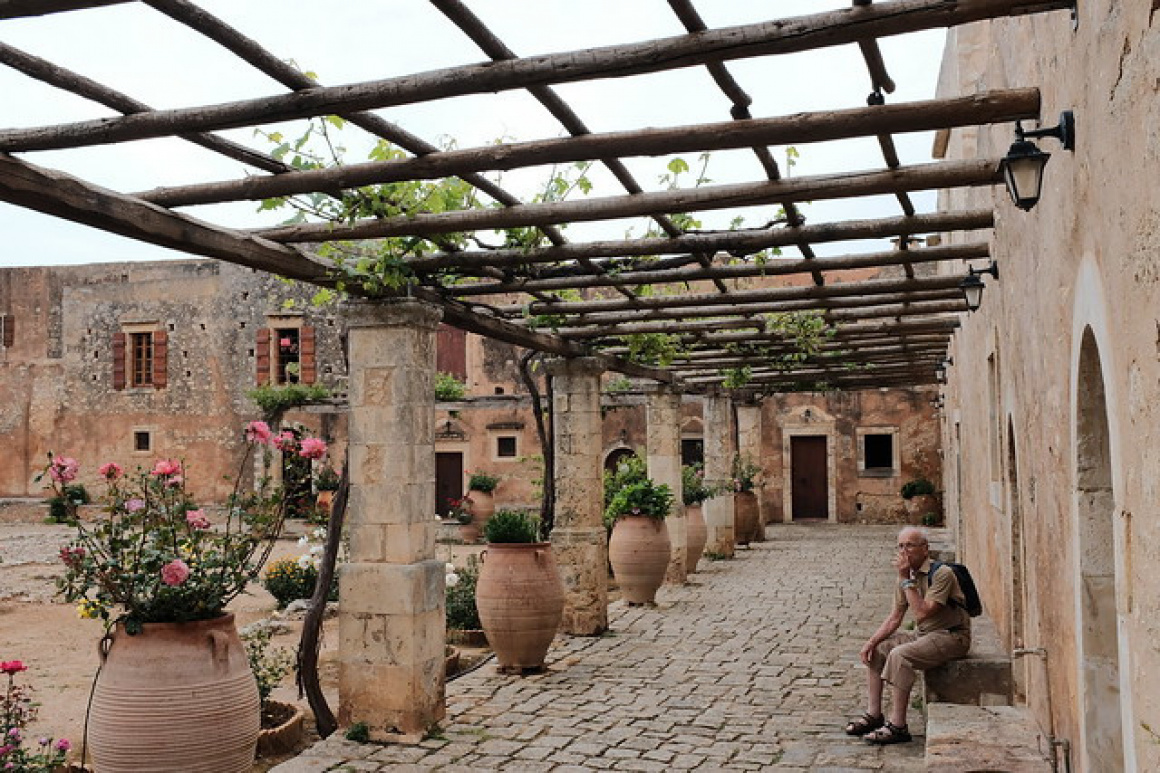
 'Arkadi Monastery' - Attribution: Safa Hovinen
'Arkadi Monastery' - Attribution: Safa HovinenCombination Visits: Given its location, Arkadi pairs well with exploring inland Rethymno. Many travelers drive on from Arkadi through the lush Amari Valley, a beautiful route with several quaint villages (like Thronos or Meronas) and tavernas. You can also head to the south coast from here – the famous Preveli Monastery and palm beach are a scenic one-hour drive south, making for a “tale of two monasteries” in one day (Arkadi and Preveli each played key roles in Cretan resistance, though in different eras). If you're headed back to Rethymno town, consider stopping at the village of Eleftherna on the way; there's a new museum there showcasing finds from ancient Eleftherna, complementing the historical narrative of the region.
Recommended Places to Stay Nearby
See our Rethymno Travel Guide for more accommodation recommendations and area tips.


